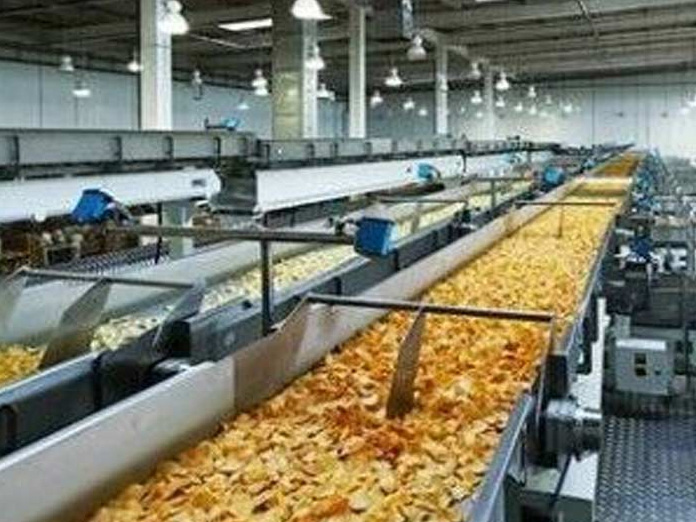What Telangana villagers need is mini-processing units

The chief minister of Telangana proposed a hub of food processing Industry on a pilot basis in six or seven mandals to be managed by Indian Kranti Groups for exporting different types of agri products THI, Page 2,Jan 1, 2019 As it looks the whole process of these units look commercial, with attractive packing, brand name and on the top of which there is scope for adulteration
The chief minister of Telangana proposed "a hub of food processing Industry" on a pilot basis in six or seven mandals to be managed by "Indian Kranti Groups" for exporting different types of agri products. (THI, Page 2,Jan 1, 2019). As it looks the whole process of these units look commercial, with attractive packing, brand name and on the top of which there is scope for adulteration.
A different model of food processing needs to be considered to ensure nutritional security to the farmers. The farmers are producing rice, jowar, chillies, turmeric an importantly edible oil seeds. They sell the produce in towns to get money and the money is spent for some other purposes ignoring their daily needs of food products. Therefore, the best way to ensure wholesome food to farmers is, to set up processing units, all mini, costing few lakhs in each village. Educate the farmers to convert raw produce into rice edible oil, chilli powder, turmeric in the village itself, sufficient for whole year for their own use and sell the rest of produce at market yards.
At one time in villages, at least in Andhra Pradesh had mini-rice mills, dal (plus) mills, grinding mills (girni) to convert into rice, wheat, jowar, chilli powder and mini-oil expellers to convert oil seeds into edible oil. After multinational companies entered into this area, these mini-processing units disappeared, and in its place attractive packets of branded oil pouches, wheat, atta, chilli, turmeric powders invaded the village markets. The problem with farmers is when they got money by selling their produce at market yards, the money will be spent for different purposes, with utter disregard for their food requirements. The result is malnutrition and associated diseases.
The village should be self sufficient for meeting their needs of rice, lentils( pulses), oil and condiments that is produced from their cultivation. The budget requirement for purchase of these equipment is just Rs 10 to 15 lakhs. The loans may be arranged for those who come forward to set up these units. The products processed is only for the requirement of villagers and it need be in attractive packings. This ensures wholesome food throughout years for villagers. This whole exercise is only to restore what was those in villages some decades back. No pilot exercise, action plans and statistics are necessary.
Spoilage of paddy, chillies etc., is another big problem. Very recent rains a few days back, destroyed the paddy, stocked in the government market yard itself. Our enquiry revealed that not enough gunny bags are available to the farmers. Therefore, they transport raw paddy as it is in a track or tractor to the marker yard and hence these frequent disasters.
Another aspect that talked about is "crop colonies change" in certain traditional habits of farmers "and every farmer preferring the similar crop". The well growth of a crop is dependent on the seed variety soil and the status of water availability. It is region specific. The farmers try to grow what is suitable to his land and that which fetch high returns. In the name of "change" don't disturb/destroy traditional varieties and introduce new varieties which may be pest prone and require high dose of pesticides and fertilizers.
Live stock is closely interlinked with agriculture. However, tractors invaded live stock. With increased water supply through Kaleshwaram available, rice is the best option, Encourage the population of cows and ox which consume rice straw. each farmer should be encouraged to grow oil seed crops like sunflower, ginger and better soya beans in one season. It provides edible oil, and protein rich cake. It may be reminded that soy cake has 50 per cent protein both useful for us as well as for live stock. Correspondingly milk production will be increased. This whole exercise is meant to increase the nutritional security of farmers by processing at the village level.
We understand that Mulknoor agricultural co-operative society Bhavadevarapally is the best standing example in providing employment to village women and for the production of goods from locally available raw products. Their activity needs to be initated by various Krishi Vigana Kendras (KVK) which are in some mandals. More KVKs could be increased which give training in various aspects like aquaculture, vermi compost, silk-rearing, dyeing of cotton fabrics etc.
In the whole of this planning the Girijans are a neglected community. They collect tamarind, soap nuts, gums, honey and several medicinal plants from forest. If processing units are set up at Girijan co-operative centres, tribals get training to produce value added food products.
Encouraging cultivation of essential oil bearing herbs like lemon grass, citronella and processing the same at the same place by steam distillation provide employment to youth. At the end the suggestion is to set up for small /mini processing units at the village level to provide nutritional/food security to villagers, tribals, women and youth. That is real Gram Swaraj as envisaged by Mahatma Gandhi. Large scale, branded food processing units, will ultimately go into the hands of rich people, with associated escalation of cost and adulteration too. The purpose of establishing mega food processing units will not be useful for the villagers.
- Dr K Nagaiah & Prof G Srimannarayana
The authors are, Chief Scientist, CSIR-IICT, Hyderabad and Retd. Professor, Dept. of Chemistry, Osmania University,
Hyderabad.














